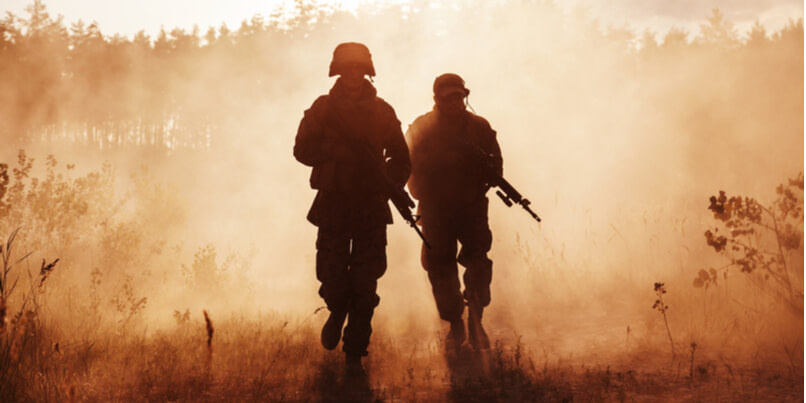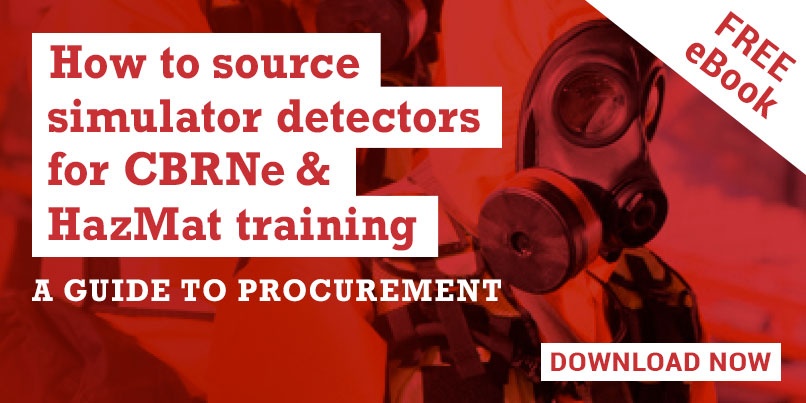 A commitment to ongoing education and training is hugely important in ensuring that military personnel are prepared and equipped for the full spectrum of combat operations that they may encounter.
A commitment to ongoing education and training is hugely important in ensuring that military personnel are prepared and equipped for the full spectrum of combat operations that they may encounter.
The U.S. Marine Corps' individual training standards focus on marines' competence in recognizing CBRN-related incidents and in taking the required protective measures to achieve their mission objectives.
Key training goals include: being able to recognise CBRN hazards or attack indicators; the checking, donning and doffing of personal protective equipment (PPE); recognizing CBRN alarms, markers and signals; employing detection equipment and relaying CBRN signals, alarms and reports.
Typically this training will comprise a combination of classroom, teaching, practical application and/or field training as appropriate.
Replicating the challenging nature of many CBRN environments however can often difficult, or in many cases impossible, if using traditional training methods.
Over the past decade we've seen a growing recognition of the value of live simulations and simulator training in being able to plug this crucial training gap.
While the laptop-based Deployable Virtual Training Environment (DVTE) simulator has been a staple of the Marine Corps' training programme for more than a decade, the integration of CBRN-specific simulator training is still a relatively new area.
But it is one that offers many opportunities.
In this blog post we examine four of the primary benefits of integrating an element of simulator-based training into an existing CBRN programme of instruction.
1. Enhanced realism
A key benefit of utilising simulator detector technology is the enhanced degree of realism and authenticity that it provides.
With the help of simulators, it is possible to place Marines in life-like scenarios that mirror the hazards of real events - but where there is zero risk of harm.
The use of simulator detectors also enables trainees to experience for themselves those extreme incidents that never occur outside of normal use.
Recreating the presence of a blood agent for example, is something that is otherwise impossible to achieve using traditional training methods, but with the use of a simulator, trainees are able to see and hear for themselves exactly how their actual detectors will react.
2. Increased trainee empowerment
A second benefit is the opportunity for instructors to hand over more of the responsibility for training and learning to their trainees.
Simulator detectors place the decision-making in the hands of the students, and remove the need for instructors to drip-feed information.
In shifting the onus onto the trainee there is also more opportunity for them to make sense of the information they receive and to formulate appropriate responses based on that information.
3. Trust in the functionality of equipment
Simulators can also be invaluable in enabling trainees to receive realistic feedback and establish greater trust in their real-world systems.
In training with a simulator that mirrors every aspect of their real device - from the weight of the detector, to the position of the buttons, to the sound of the alarms - students are able to better rely on themselves and on the functionality of their equipment.
3. A better learning experience
Simulator-based training provides trainers with the capability to have eyes on all aspects of the training process, and for all errors to recorded even if they may not immediately spot those errors themselves.
This information can then provide a valuable learning point when it comes to post-exercise evaluation.
With simulator detectors, trainees also have the freedom to safely make mistakes, to recognize when they make those mistakes and to adapt their actions accordingly.
The growing interest in CBRN technologies
The U.S. Marine Corps is committed to "innovation, education enhancement and investment in the resources, and technologies that facilitate learning."
Those investments, it says, include the continued modernisation of its "training ranges, training devices, and infrastructure," as well as the leveraging of "advanced technologies and simulation systems to create realistic, fully immersive training environments."
The ability to achieve objectives and maintain freedom of action in a CBRN environment are vital factors in achieving mission success.
As the diversity, complexity and unpredictability of CBRN incidents continues to grow, the interest and investment in simulator technologies is only likely to increase as more organizations recognize their value in improving safety, heightening realism and enhancing learning outcomes.






